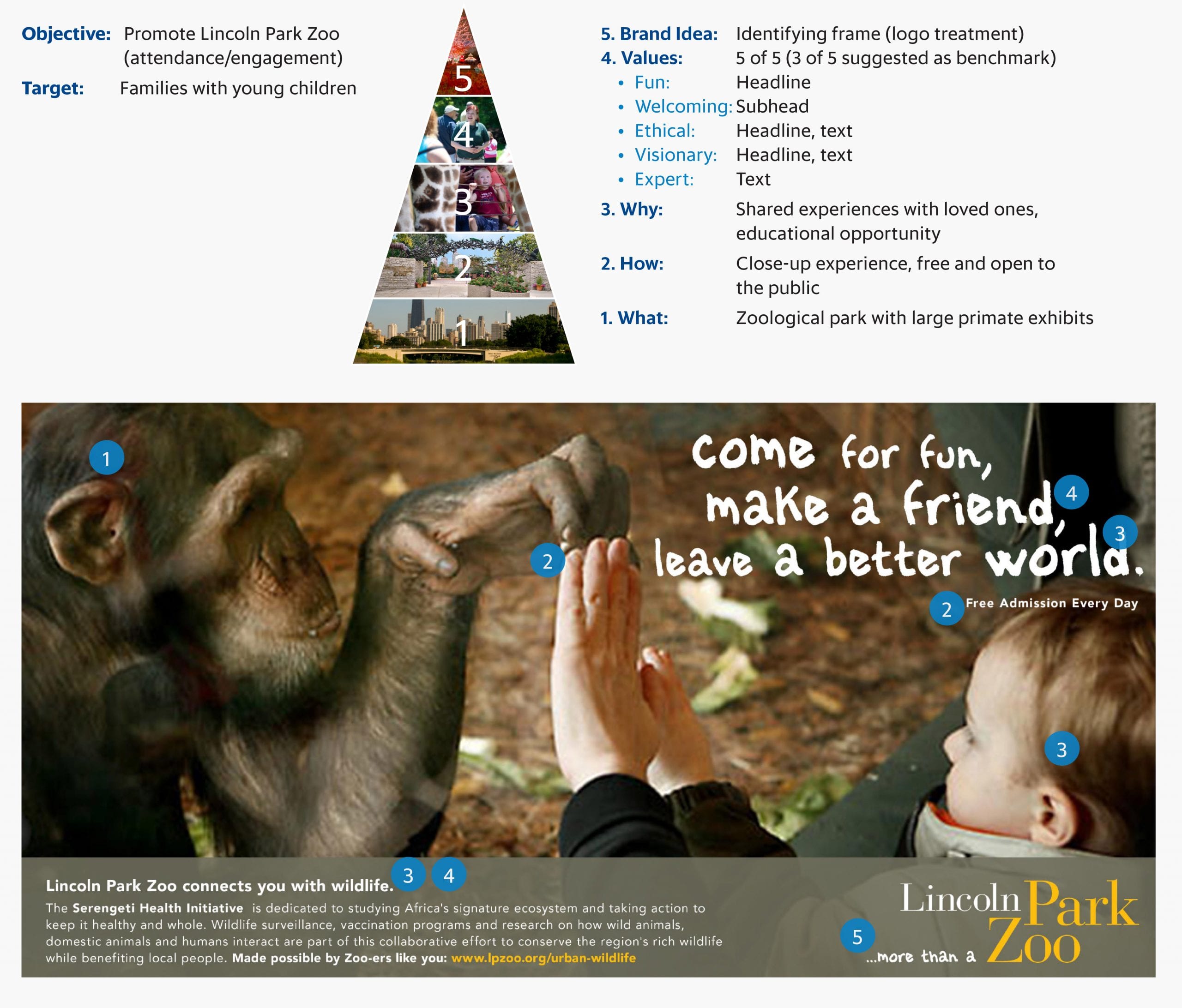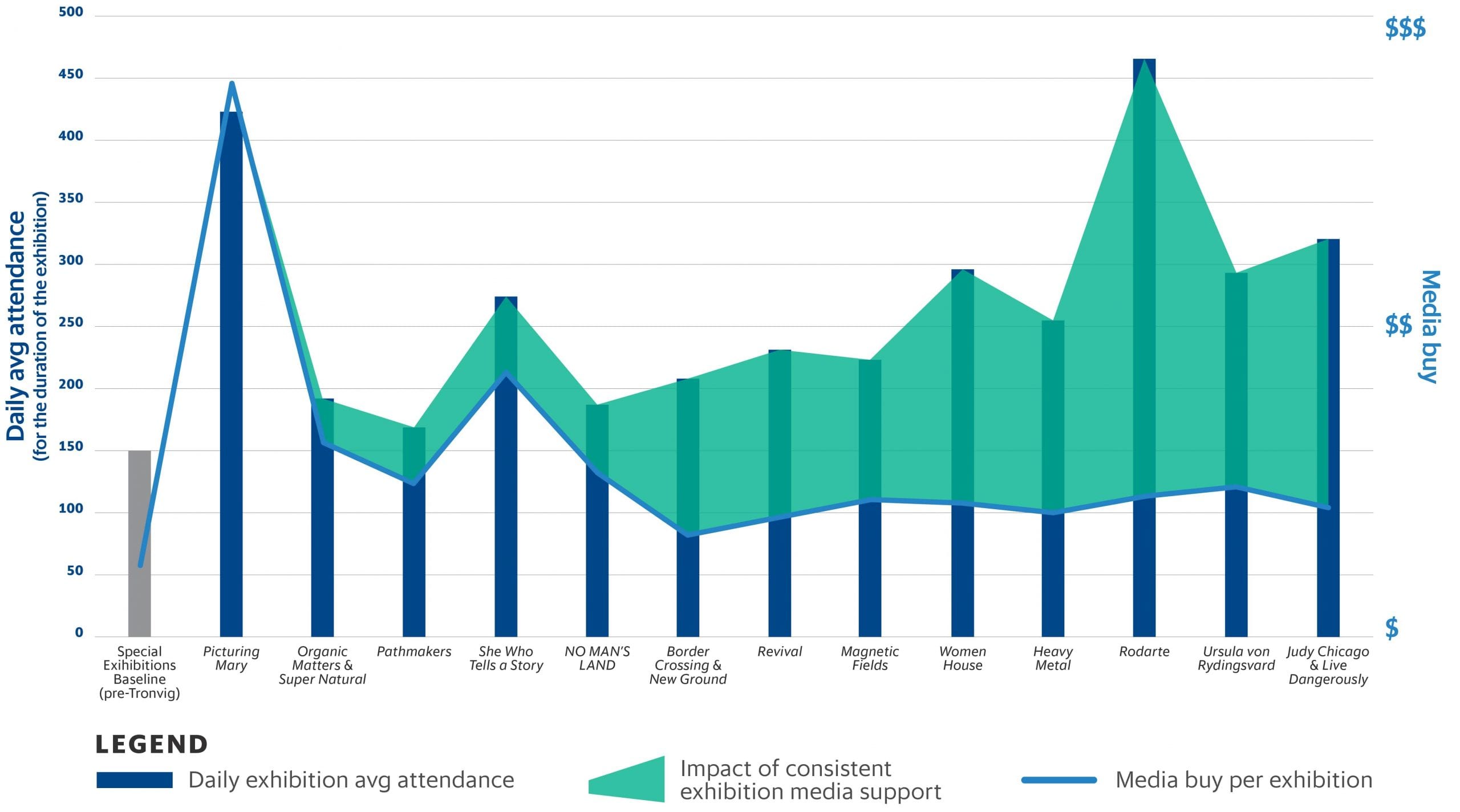Co-written by James Heaton
It’s practically impossible to go through a day without running into ads. Whether I’m taking a drive or working online, I’m subjected to billboards and banner ads trying to get me to spend my money on some consumer product or indulgent trip.
What I rarely see, though, are nonprofit advertising campaigns encouraging me to contribute to meaningful causes or cultural programs. While tenacious advertisements have successfully gotten me to make impulse buys while tapping through Instagram Stories, I have had comparably little opportunity to swipe up and donate to causes I care about.
For nonprofits, the risk of wasting money on advertising is often a debilitating concern. There is the prevalent notion that using funds on anything that doesn’t directly contribute to “the cause” is wasteful. Ignoring the fact that investing in advertising can result in a greater impact in the long run, many nonprofits tread carefully with their spending out of fear of being accused of misusing funds, thereby discouraging donors.
In the same way that for-profit advertising can stimulate and even create a desire for commercial products and services, nonprofits can use advertising to bring greater attention to and encourage support for their cause.
But as social entrepreneur Dan Pallotta argued in an HBR article, “spending money to build demand for the great causes of our time is as central to those causes as direct service.” In the same way that for-profit advertising can stimulate and even create a desire for commercial products and services, nonprofits can use advertising to bring greater attention to and encourage support for their cause.
While it’s important to shift away from the idea that all advertising is a waste of money, beware of aligning with the other end of the spectrum and thinking that all ad spend is effective. Candidly, advertising is often a waste of time and resources. Bombarded by ads, consumers subconsciously filter out any irrelevant information, making it harder than ever for brands to break through the clutter and successfully deliver a message with their advertisements.
This current landscape begs the question: in a world where nonprofit advertising is needed yet also notoriously difficult to do well, when are advertising efforts not a waste of time and money?
When nonprofit advertising is backed by strategy
The foundation of any advertising campaign should be a solid strategy. It may be tempting to dive straight into the creative aspects of a campaign, but without a thorough understanding of your audience—what they value, where and when they are most receptive—as well as a deep understanding of your own brand, the decisions made will inevitably focus too much on what you want to say and not enough on what the intended audience is ready to hear. This, more often than not, will inhibit the campaign’s effectiveness.
For nonprofits, who are always under unique pressures to have their advertising work, a solid strategy is critical to ensure that precious time and resources are not wasted. Sure, flashy visuals or catchy wording are important, but even the best creative can be easily ignored if the foundational message is thought irrelevant.
As an example, the storied Lincoln Park Zoo had restored a pond on its grounds, bringing back the biodiversity of its flora and fauna. The advertisements promoting this urban oasis they had created were gorgeous but ineffective. The ads had lush imagery, clever copy, and good design, but ultimately lacked meaningful strategic direction.
The ads focused on what Lincoln Park Zoo was selling, not what the customer was buying. Research showed that the zoo was not just an urban oasis, but a place for families to bond around shared experiences. The animals, the animal welfare mission of the institution, and the meticulous attention to detail that the zoo prided itself on were all means to an end: human connection.
After going through the effort to clearly understand the zoo’s value proposition and define its brand strategy, the zoo could more clearly see what its key audience valued and thus build a story around that in its advertising. The new brand campaign was not just rooted in the “urban oasis” but also in the how, why, values, and Brand Idea of the zoo.
How a strong brand enables successful advertising (and vice versa)
As noted above, a clear understanding of one’s brand is needed before money and time are spent to communicate that publicly. Advertising is the paid communication of a brand and its offerings targeted to the audience that is most likely to be receptive to that message. When the brand is weak and the message untailored, then most of the dollars spent on advertising slip into the waste column.
A strong brand strategy that drives creative design paves the way for advertising that has worthy results. In turn, successful campaigns work to strengthen the brand, initiating a mutually beneficial cycle. Regular and effective communications beget familiarity and positive associations, advancing a brand toward memorability and likeability. This emotional positioning is highly advantageous when you need to make an ask for a donation, for instance.
This chart tracking the results of our advertising for the National Museum of Women in the Arts illustrates the long-term effect of this positive feedback loop. It shows the connection between sustained effort and yield. The early campaigns show a close correlation between ad spend and attendance, but as the brand establishes familiarity and positivity over time, the yield (shown here in attendance figures) continues to grow despite no additional ad spend. So, the cumulative effect of successive promises made and kept builds brand loyalty and increases advertising’s reach and effectiveness.
Even more, a quick scan of the top charities and nonprofits in the U.S., as ranked by Forbes, shows how the organizations with the greatest donation and revenue streams are also the ones with the most recognizable names, from the Metropolitan Museum of Art to Helen Keller International. The stronger a brand becomes, the greater the return on its advertising or fundraising efforts.
The stronger a brand becomes, the greater the return on its advertising or fundraising efforts.
By investing upfront in brand strategy and then marketing strategy, ensuring that your advertising is aligned with your brand promise, and leveraging the insights from a robust marketing strategy, nonprofits can grow their support base and inspire loyalty from donors, employees, advocates, etc. At the end of the day, it is loyalty that has the power to significantly improve the effectiveness of advertising, helping nonprofits go from being a community’s best-kept secret to enhancing their capacity to have a long-term impact with less advertising cost and less waste.





I enjoyed this and learned quite a bit.
I have read Jim Collins’s books, so I suppose that would ensure me liking this sort of reading.
Thank You,
Karl